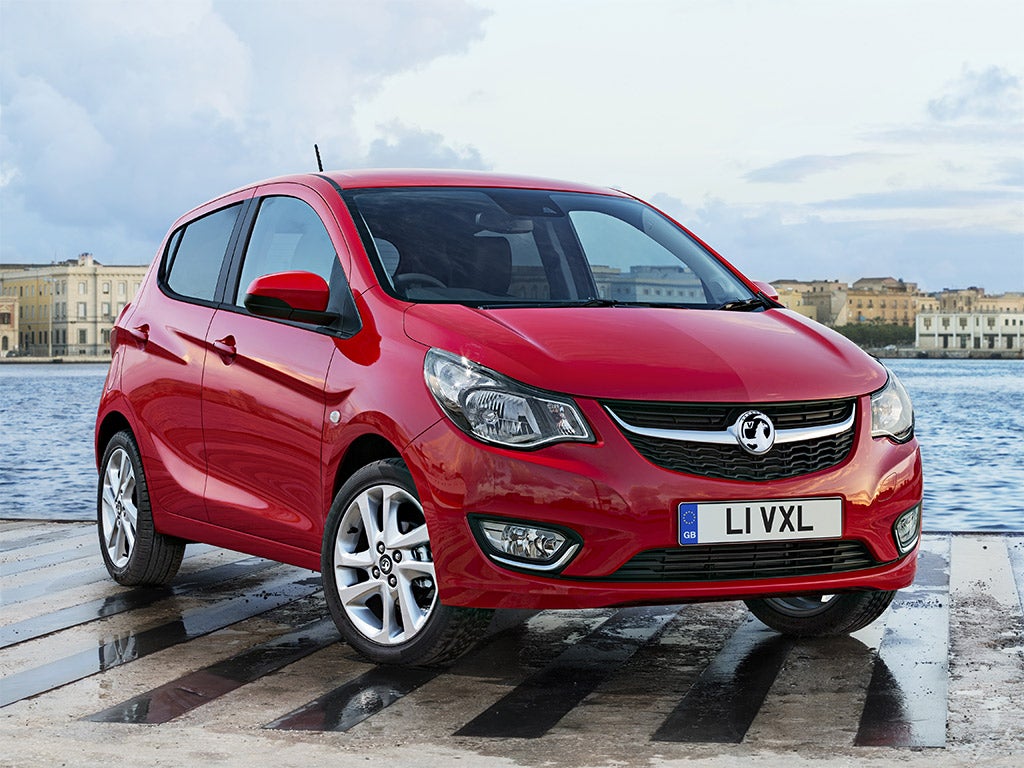Vauxhall Viva SE 1.0, motoring review: Great to chuck around, easy to park - long live the Viva!
Viva, which is made in South Korea, is a totally better beast to its predecessors

Your support helps us to tell the story
From reproductive rights to climate change to Big Tech, The Independent is on the ground when the story is developing. Whether it's investigating the financials of Elon Musk's pro-Trump PAC or producing our latest documentary, 'The A Word', which shines a light on the American women fighting for reproductive rights, we know how important it is to parse out the facts from the messaging.
At such a critical moment in US history, we need reporters on the ground. Your donation allows us to keep sending journalists to speak to both sides of the story.
The Independent is trusted by Americans across the entire political spectrum. And unlike many other quality news outlets, we choose not to lock Americans out of our reporting and analysis with paywalls. We believe quality journalism should be available to everyone, paid for by those who can afford it.
Your support makes all the difference.Price: £7,995 (£8,540 as tested)
Engine capacity: 1-litre petrol
Power output (bhp @ rpm): 75 @ 6,500
Top speed (mph): 106
Fuel economy (mpg): 62.8
CO2 emissions (g/km): 104
You may have noticed the ad campaign for Vauxhall's new Viva. It's quite retro, as it draws on the fact that the Viva name was first applied to one of its models back in 1963, and it stopped making the small family saloons that bore that badge some 36 years ago. In the "gay" ads, as they'd have been called at the time, all pastel shades and jolly typeface, you are invited to believe that the new Viva is a vast improvement on the old one, because it has lots of new features, such as an automatic tyre-pressure monitor.
If anything, Vauxhall understates matters. The original boxy Viva ran out of puff at 72mph and would get you to 60mph in some 20 seconds. You'd probably find some rust on a new one within the first year of ownership, and the game was pretty much up for any Viva before its fifth birthday.
By contrast, today's Viva, which is made in South Korea, is a totally better beast. What's more, the average British worker can earn the price of a new Viva in about five months; in 1963, the £527, 7 shillings and 11 pence a Vauxhall dealer would demand represented about a year's wages for the average worker. O brave new world, That has such cars in't!
The new Vauxhall is great fun to chuck around, it will cruise, a little noisily, at motorway speeds – it needs revving at any speed – is superbly manoeuvrable for parking and is easy to get in and out of. The boot, though, is small without the seats folded forward.
In 1963, the Viva's competition was the Morris Minor and Ford Anglia. Today, there are two sets of joint-venture triplets: the Skoda Citigo/Seat Mii/VW Up! and the Citroën C1/Peugeot 108/Toyota Aygo trio. Also on the long list are the Suzuki Alto, Nissan Micra, Mitsubishi Mirage, Smart Forfour/Renault Twingo, Kia Picanto, Proton Savvy and Hyundai i10, among the ones I can remember. Most boast lively three-cylinder petrol engines, as does the Vauxhall. The Mitsubishi Mirage is the least accomplished, I had some issues with a Smart that I tested and I don't rate the Proton, but apart from that you'd be quite hard-pressed to choose.
The best approach is probably to go for the cheapest, which pits the Viva against the very reliable Suzuki Alto. I think you'll prefer the Viva. Anyway, you're spoilt for choice compared with granddad. Viva la Viva!
Join our commenting forum
Join thought-provoking conversations, follow other Independent readers and see their replies
Comments